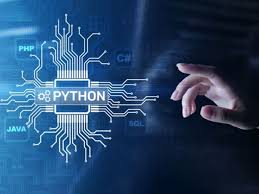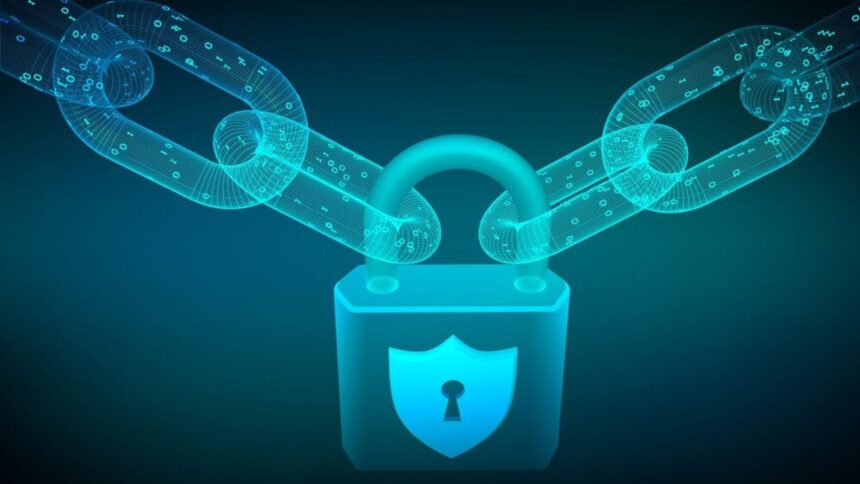Introduction to Python and its Popularity
Python is taking the tech world by storm, and it’s not hard to see why. This versatile programming language has captured the hearts of developers, data scientists, and entrepreneurs alike. Its clean syntax and powerful libraries make coding feel less like a chore and more like an adventure. Whether you’re looking to build web applications or dive into data analysis, Python opens up a world of possibilities.
With its growing community and wealth of resources, now is the perfect time to jump on board this exciting journey. So if you’ve been curious about what all the fuss is about when it comes to 418dsg7 python, you’re in for a treat! Let’s explore what makes Python so appealing and how you can start mastering it today.
Key Features and Advantages of Using Python
Python stands out for its simplicity and readability. The clear syntax makes it accessible to beginners and seasoned developers alike. This ease of use accelerates the learning process, enabling new programmers to grasp concepts quickly.
Another significant advantage is Python’s versatility. It can be employed in various fields, from web development to data analysis and machine learning. This flexibility allows developers to apply their skills across multiple domains without needing extensive retraining.
The thriving community around Python offers a wealth of resources, libraries, and frameworks that enhance productivity. Popular libraries like NumPy for numerical computing or Django for web applications streamline development tasks significantly.
Moreover, Python supports multiple programming paradigms such as procedural, object-oriented, and functional programming. This adaptability empowers programmers with various approaches to solving problems effectively while catering to diverse project requirements.
How to Get Started with Python – Setting up the Environment
Getting started with Python involves setting up your development environment. This is crucial for a smooth coding experience.
First, download the latest version from the official Python website. The installation process is straightforward and user-friendly. Make sure to check the box that adds Python to your system PATH during installation.
Next, consider using an Integrated Development Environment (IDE). Popular choices include PyCharm, VSCode, and Jupyter Notebook. Each has unique features that cater to different types of projects.
Don’t forget about package management! Install pip if it’s not included by default. This tool allows you to manage libraries effortlessly.
Test your setup by running a simple script in your chosen IDE or terminal window. Once everything’s ready, you’re well on your way to diving into the world of Python programming!

Understanding Syntax and Basic Programming Concepts
Understanding Python syntax is like learning the grammar of a new language. Each line of code must follow specific rules to be understood by the interpreter.
Python uses indentation instead of braces or keywords to define blocks of code, making it visually appealing and easy to read. For instance, proper spacing is crucial; inconsistent indentation can lead to errors that are often tricky to debug.
Basic programming concepts such as variables, data types, and control structures form the backbone of coding in Python. Variables act as containers for storing values. The flexibility with data types allows developers to work with integers, strings, lists, and more without cumbersome declarations.
Control structures like loops and conditionals enable you to guide your program’s flow based on certain conditions. Embracing these fundamentals sets a solid foundation for writing more complex programs later on.
Building Your First Program in Python – Hello World!
Building your first program in Python is an exciting milestone. The classic “Hello, World!” example is not just a rite of passage; it’s a simple way to understand the basics of coding.
To get started, open your favorite code editor or IDE. Python’s syntax is clean and readable, making it beginner-friendly. Type in the following line:
“`python
print(“Hello, World!”)
“`
This single command does wonders. When you run this code, you’ll see “Hello, World!” appear on your screen.
What seems like magic introduces you to key concepts: functions and outputs. The `print()` function displays text based on what you provide inside the parentheses.
Experiment by changing the message or adding more print statements. Each tweak brings new learning opportunities and builds confidence as you delve deeper into programming with Python.
Exploring Different Applications of Python – Web Development, Data Science, Machine Learning, etc
Python’s versatility shines in various domains. In web development, frameworks like Django and Flask streamline the process, allowing developers to create robust applications efficiently.
Data science relies heavily on Python for its powerful libraries such as Pandas and NumPy. These tools enable data manipulation and analysis with ease, making it a favorite among analysts.
Machine learning has taken off with Python at the forefront. Libraries like TensorFlow and scikit-learn facilitate building sophisticated models that learn from data patterns.
Python also finds a place in automation tasks. Scripts can automate repetitive jobs, saving time across industries.
Additionally, game development is another exciting area where Python makes an impact through libraries like Pygame. Creating interactive experiences becomes accessible for aspiring game designers.
Its adaptability continues to open doors across fields, proving that Python is more than just a programming language; it’s a gateway to innovation.
Tips for Mastering Python and Becoming a Skilled Programmer
Consistency is key when mastering Python. Dedicate time each day to practice coding. Small, daily sessions can be more effective than occasional long marathons.
Engage with the community. Join forums, attend meetups, or participate in online groups focused on Python programming. These platforms are great for learning from others’ experiences and sharing your own insights.
Work on real projects that interest you. This will not only reinforce your skills but also keep you motivated. Choose tasks that challenge you slightly beyond your current ability.
Don’t shy away from debugging and errors; they are part of the learning process. Understanding mistakes deepens your knowledge significantly.
Explore advanced topics like decorators or generators as you progress. They can enhance your coding efficiency and open new avenues in problem-solving within Python development.

Conclusion – The Future of Python and Why You
The future of Python looks incredibly bright. Its versatility and ease of use make it a preferred choice for beginners and professionals alike. As technology continues to evolve, Python is finding its way into new fields. From web development to artificial intelligence, the applications are endless.
Python’s community is vibrant and supportive. With countless resources available online, anyone can learn at their own pace. This accessibility contributes to its growing popularity in academic settings as well as in industry.
As you explore Python further, you’ll discover that it offers numerous libraries and frameworks designed to simplify complex tasks. Whether you’re interested in building websites or diving into data analysis, there’s a place for you within the Python ecosystem.
Embracing this programming language can open doors to exciting career opportunities. The demand for skilled Python developers continues to rise across various sectors including finance, healthcare, education, and more. By investing time in mastering 418dsg7 python now, you position yourself at the forefront of technological advancements.
Jumping on board with Python today may very well set the stage for your future endeavors in tech-driven industries.




